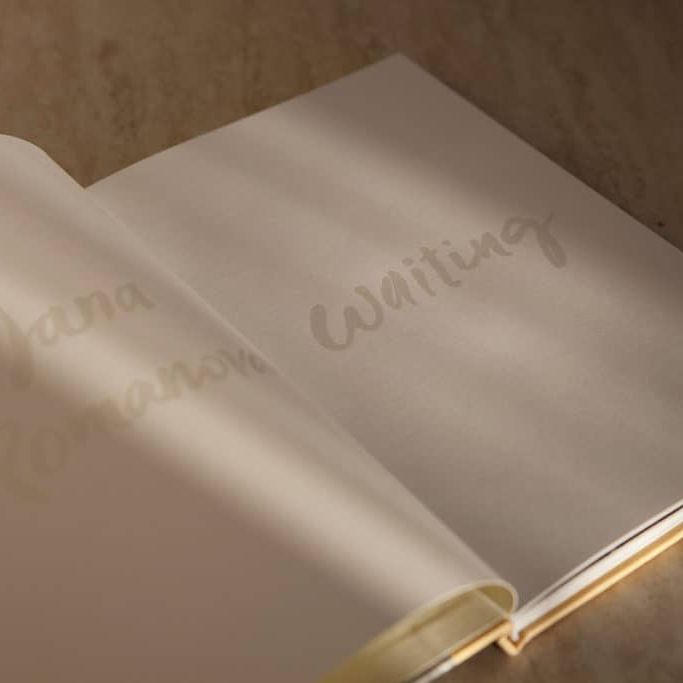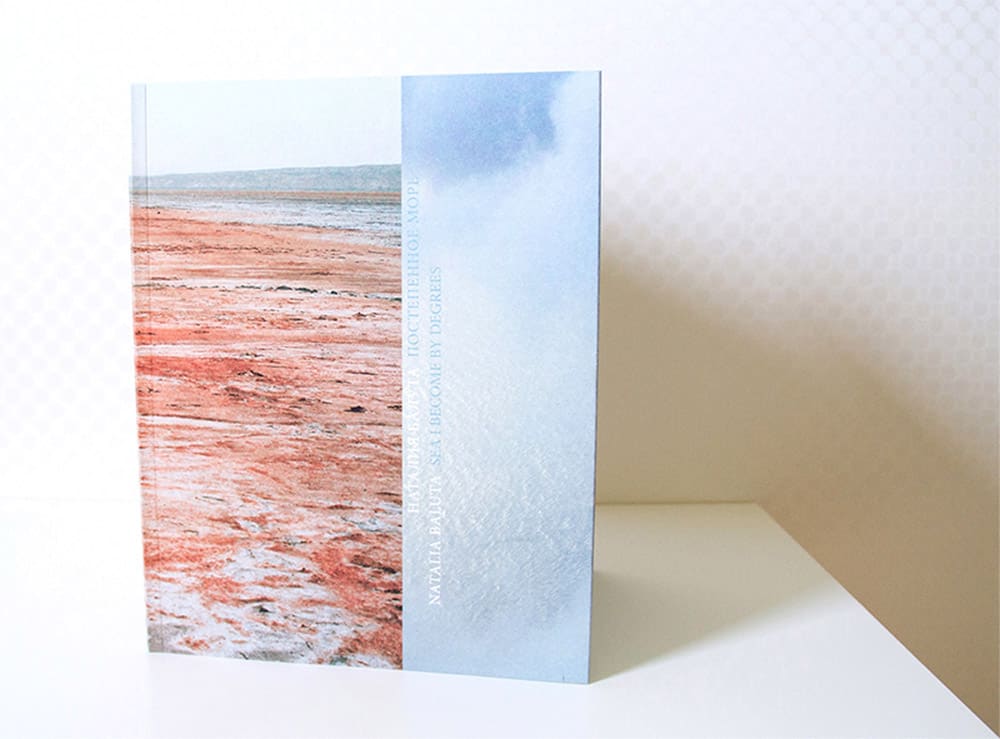
‘For the first time in the course of history modern man on this earth now confronts himself alone… We live in a world which man has changed so completely that in every sphere – whether we deal with the tools of daily life. Whether we eat food which has been prepared by machines, or whether we travel in a countryside radically changed by man – we are always meeting man-made creations, so that in a sense we meet only ourselves’ (Heisenberg W. The Physicist’s Conception of Nature).
Natalia Baluta has given me her new book Sea I Become By Degrees (Postepennoye More in Russian) when we meet at the Book Market in Amsterdam. When I hold the book in my hands it feels light and flexible, almost weightless despite its rather large size (a little smaller than the familiar A4 format). The book is terra-cotta orange and transparent blue – the colours of the desert and water.
This book is about the extinct (i.e. dried-out) Aral Sea. One of the main reasons to its shrinking and drying up was the Soviet irrigation project in the Central Asia (the watering arrangements had been started even earlier in the Tsar times, however the ecosystem was resilient enough to keep the balance until around the 1960s). The rivers that fed the Aral Sea, the Amu Darya and the Syr Darya, were diverted and the sea could not survive. It started to shrink and get shallow, so the salinity levels increased which destroyed marine flora and fauna. Before its dry out the Aral Sea had been the fourth largest lake in the world.
The book cover depicting the clash of the sea and the desert, as if in effort to suppress one another, deploys to create a bold horizontal that helps the reader immerse in the ‘sea’ of pages.
Although the book is printed in portrait format it is perceived horizontally due to some pages unfolding lengthwise. The album format is known to be a bit complicated format for a photobook since the book appears inconveniently lengthy when spread out. Designer Julia Borissova and photographer Natalia Baluta have found an elegant constructive solution – by means of fold-out pages they have preserved the desired upright format as well as created the required horizontal of water surface.
Following the title page before the reader’s eyes there expands an infinite marine horizon that stretches far beyond the cadre. This cannot but recall the almost identical composition in Andreas Gursky’s Rhein II.
For all its seeming simplicity the book has a multicomponent structure of a visual narrative. On sheets of tissue paper twice smaller than the regular page the images of pressed plants are printed. The tissue paper is almost unnoticeable when the book is opened, so the dried herb seems real and almost falling out of the paper volume. At certain intervals one may find inserts – loose sheets of A4 format folded in half. There is almost ‘nothing’ that could be described – just fragments of sky, desert, and an aerial view of the sea; these inserts fall/flow out of the book like water.
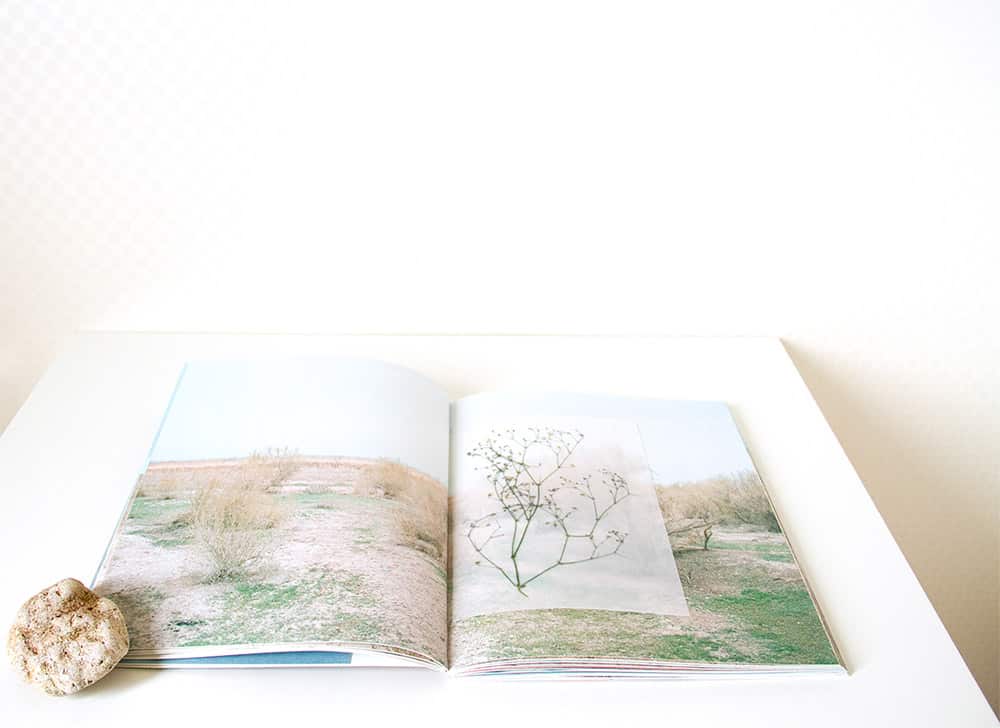
One might have an impression that the photographs have lost a bit of colour saturation (as if burnt by the scorching sun, or dried in the heat), as they are printed on rough paper without any gloss, so almost all their photographic nature has gone (these look more like dry-point graphics than a live photo).
A rusty hulk, empty seashells powdered in sand, pressed plants, the remnants of the sea that has slipped into the sand – almost all photographs in the book are related to the genre of memento mori (Latin for ‘remember you will die’), symbolizing the transience of earthly existence. Only the blurred cows that stride grandly along the shore of once huge salty lake belong to the world of the living in this apocalyptical scenery resembling a landscape after the World War III or a distant desert island where once an unfortunate sailor accidentally moored his ship.
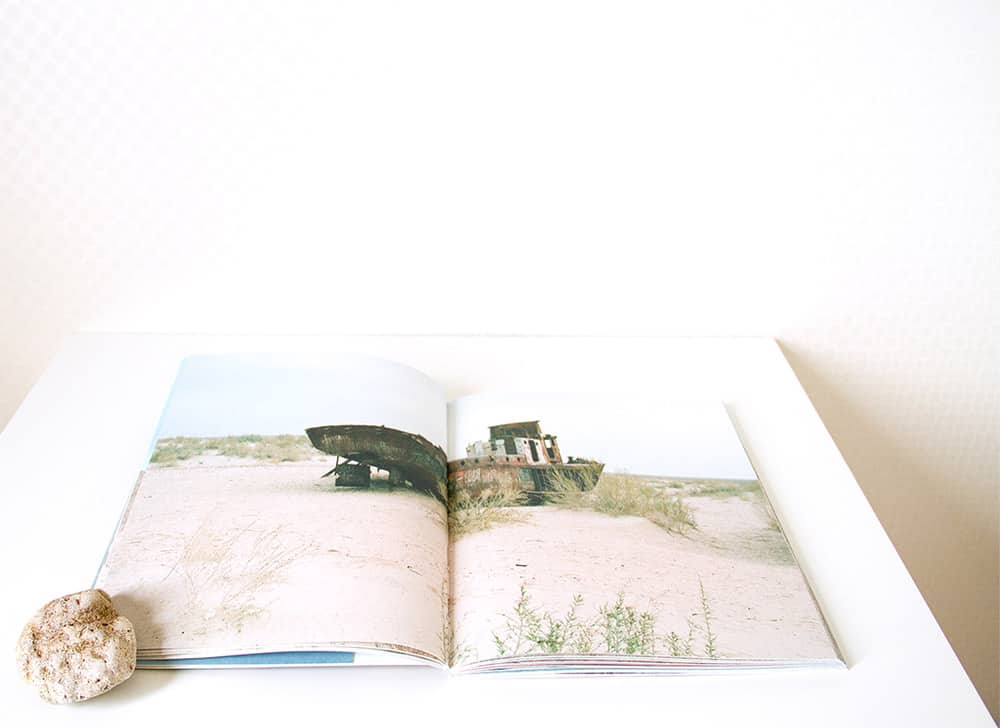
Such genre is by all means not new to photography. Baluta explores visually the phenomenon of consequences (the Swiss curator Nathalie Herschdorfer dedicated her book Afterwards: Contemporary Photography Confronting the Past to the photography of consequences). Today the photographic documentation and interpretation of the consequence of conflicts, suffering, and catastrophes is an important type of projects for photographers from all over the world. It is noteworthy that the previous photobook by Natalia Baluta (dedicated to the future rather than the past) is titled Afterwards (Potom in Russian). Just like a scientific researcher, the photographer works consistently and methodically with the topic of past/future, consequences, artefacts, and memory, of course.
The dry out of the Aral Sea is obviously becoming a metaphor for the extinction of our cultural roots, forgetting and losing, and it unexpectedly rhymes with Danila Tkachenko’s Motherland (Rodina in Russian). The artist burns down the cultural layer of our past. Baluta, however, has a totally different approach. She carefully and desperately collects what is left of it. (‘Here it is hard to believe that Aral could get back again once. Standing knee-deep in water and viscous mud, I was talking to the sea, asked it to hold on, hoping for a miracle, for the mysterious forces, promised by the legends’).
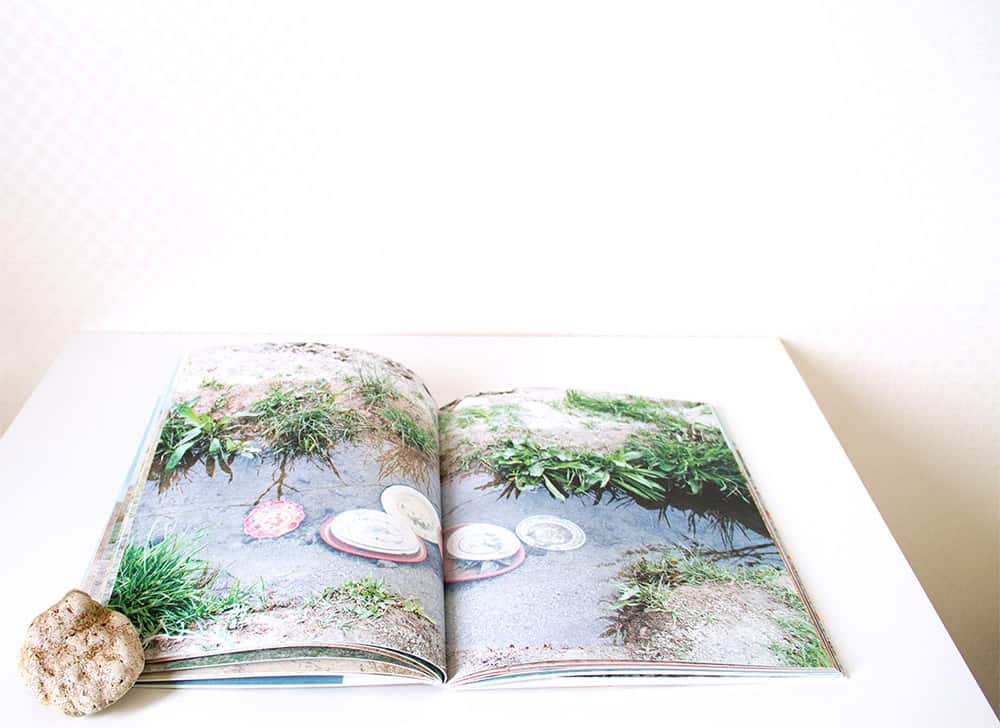
Thematically, the images in Baluta’s book belong to ‘man-altered landscape’ photography, which became popular after the exhibition ‘New Topography’ held in the USA in 1975 (curator William Jenkins). However, while the classical man-altered landscape is dry, cold, precise and topographically descriptive, Natalia’s works are veryemotional – through telling the story of the sea that has become a desert, she speaks of her own personal experience of life and death. Interestingly, the book’s English title directly indicates that this is a personal story (about how Natalia herself gradually becomes the ‘sea’), while in Russian it remains more neutral (‘Postepennoye more’ literally translates as ‘The Gradual Sea’).
The gradual transformation of the author into a dried out sea also denotes ‘withering with time’, the draining of lifeblood. It is no coincidence that in the opening text the photographer shares her private emotions mentioning that the skin of her deceased grandmother felt ‘dry as sand’ as she touched her cheek at the last respects. After having read this text at the very beginning, the reader cannot escape this comparison throughout the book.
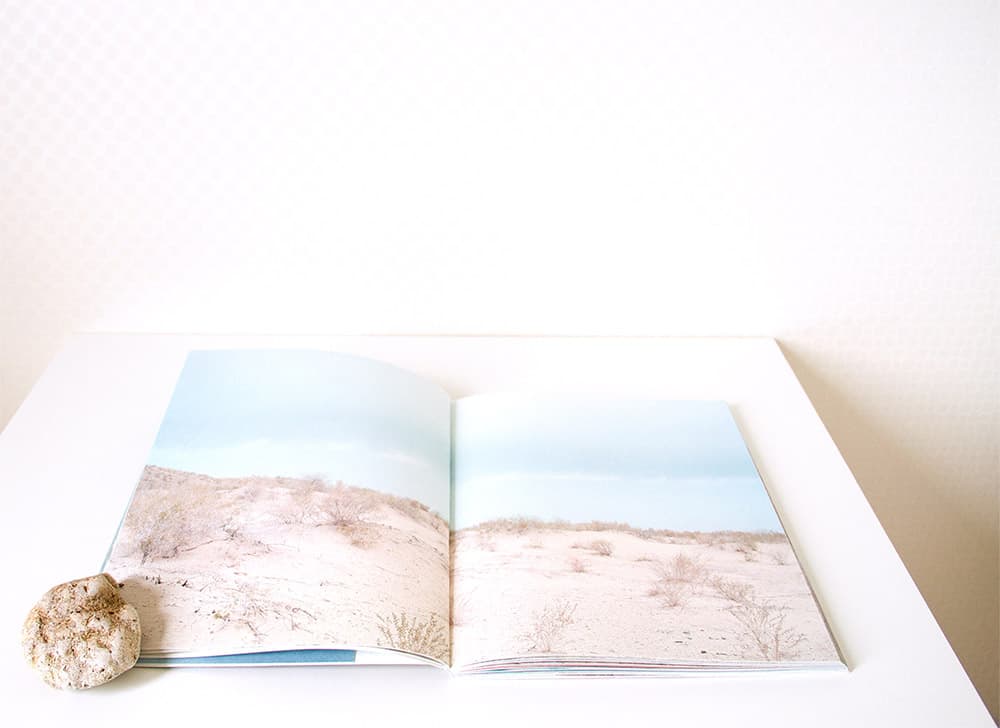
For me personally Natalia’s narrative also turned out to be about motherhood – the sea gone shallow and the result of what it has given all its powers and waters for, the thriving cotton plantations in the Central Asia represented in the book by plants printed on tissue paper. Ecological disaster is translated here into a narrative on life cycles, on the transition of one type of matter and energy into another.
In the work The Question Concerning Technology Martin Heidegger reflects on how the technological progress has brought the nature out of ‘the obscure’. Heidegger draws on the Rhine River to exemplify his point. The hydroelectric plant in the Rhine River turns it into an instrument at our command. The natural world has been deprived of its mystery and poetic air becoming simply a ‘water power supplier’. Photographic man-altered landscape transforms into the views of subdued, utilized, and forcedly reshaped nature. Natalia Baluta’s book is concluded by a series of collages composed of variably folded topographic maps, traumatized by random folds and fractures that change the whole picture of the world at the will of the industrial subject. ‘But where is anyone / So happily born as the Rhine / From such propitious heights / And from so holy a womb / To remain free / His whole life long and alone fulfil / His heart’s desire, like him?’ (F. Hölderlin). And yet, Baluta’s already extinct Aral Sea eventually regains its natural state and becomes free – the book is difficult to hold in hands, the pages flow through one’s fingers, the eye does not focus on semi-blurred landscapes, so the book flows and runs away like water.
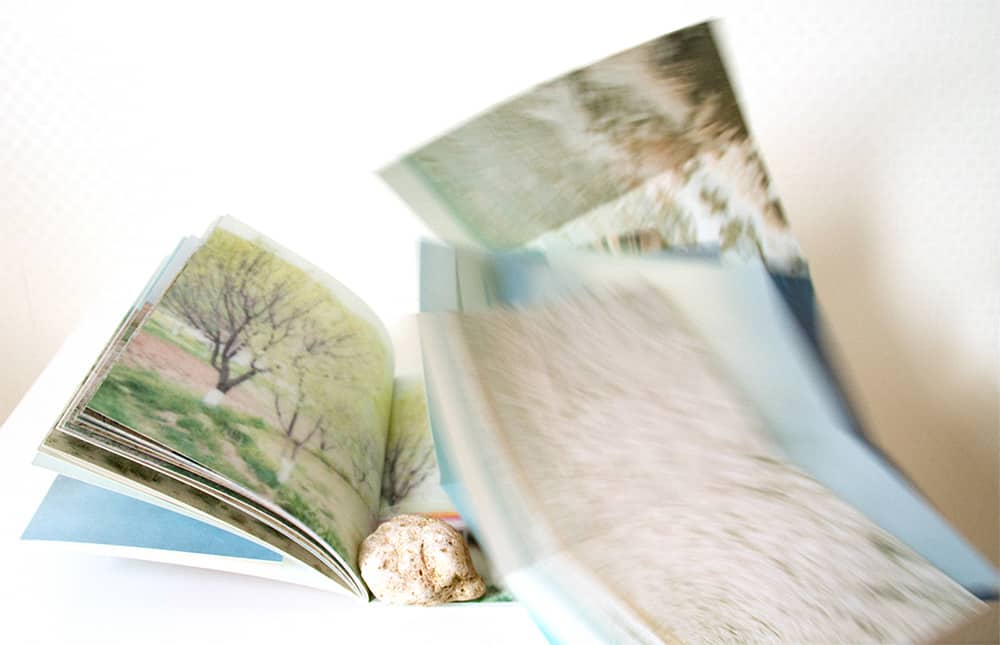
“Sea I become by degrees”
Self published, 2017
author Natalia Baluta, design by Julia Borissova
Soft cover, sewn binding; Size 19×24.5sm; 64 pages + 11 inserts;
3 types of paper; Offset printing;
Edition of 150 signed and numbered copies. Plus Special edition of 30 copies.
Short list The Anamorphosis Prize 2017
Jana Romanova:“Waiting”. Photo book review
December 7, 2016
Young Russian photography. Part 2. Ural.
April 19, 2015
Young Russian photography. Part I
January 11, 2015
